
Machine Intelligence Research
Scope & Guideline
Pioneering Research in Machine Intelligence and Beyond
Introduction
Aims and Scopes
- Machine Learning and Deep Learning Techniques:
The journal extensively covers the development and application of machine learning and deep learning methodologies, including supervised, unsupervised, and reinforcement learning approaches. - Artificial Intelligence Applications:
Research published in the journal explores a wide range of applications of artificial intelligence, including natural language processing, computer vision, robotics, and healthcare. - Model Interpretability and Explainability:
A significant focus is placed on enhancing the interpretability and explainability of machine learning models to ensure transparency and trust in AI systems. - Multimodal Data Processing:
The journal addresses the challenges and techniques involved in processing and analyzing multimodal data, integrating information from various sources such as text, images, and audio. - Graph-based Learning and Neural Networks:
There is a notable emphasis on graph-based learning methods, including graph neural networks, which are used for tasks involving relational data and complex structures. - Federated Learning and Privacy-preserving Techniques:
Research also delves into federated learning methodologies that allow models to learn from decentralized data while maintaining privacy and security. - Robustness and Security in AI Systems:
The journal highlights research aimed at improving the robustness and security of AI systems against adversarial attacks and other vulnerabilities. - Cognitive and Brain-inspired Approaches:
The journal explores cognitive computing and brain-inspired methodologies, drawing parallels between artificial intelligence systems and human cognitive processes.
Trending and Emerging
- Trustworthy AI and Ethical Considerations:
Recent publications highlight a growing concern for trustworthy AI, focusing on privacy, fairness, and robustness, reflecting a broader societal demand for ethical AI systems. - Generative Models and Their Applications:
There is a surge in research on generative models, particularly in the context of language and image generation, indicating a trend towards creating more sophisticated AI systems capable of generating new content. - Self-supervised and Unsupervised Learning:
A significant trend is the increased interest in self-supervised and unsupervised learning techniques, which allow models to learn from unlabeled data and reduce the reliance on large labeled datasets. - Cross-disciplinary Approaches:
Emerging research often combines insights from various disciplines, such as neuroscience, cognitive science, and robotics, to develop more comprehensive AI models. - AI for Healthcare and Medical Applications:
The application of AI in healthcare, particularly in medical imaging, diagnostics, and personalized medicine, is gaining momentum as researchers seek to leverage AI for improving patient outcomes. - Explainable AI (XAI):
There is an increasing focus on explainable AI, as researchers aim to develop techniques that allow users to understand and trust AI decisions, especially in critical applications. - Robustness Against Adversarial Attacks:
Research that addresses the robustness of AI models against adversarial attacks is becoming more prominent, reflecting growing concerns about the security of AI systems.
Declining or Waning
- Traditional Machine Learning Methods:
There is a noticeable decrease in research focusing solely on traditional machine learning methods as the field shifts towards more sophisticated deep learning and hybrid approaches. - Basic Image Processing Techniques:
Research centered on basic image processing techniques is waning as advancements in convolutional neural networks and deep learning have overshadowed simpler methods. - Single-modal Data Analysis:
The focus on single-modal data analysis is declining as researchers increasingly recognize the benefits of multimodal approaches that combine information from diverse data sources. - Rule-based AI Systems:
The interest in traditional rule-based AI systems is diminishing as the community gravitates towards data-driven and learning-based approaches. - Basic Theoretical Foundations:
While foundational theoretical work is essential, the emphasis on basic theoretical studies is decreasing in favor of applied research with practical implications.
Similar Journals
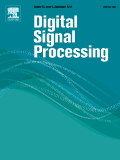
DIGITAL SIGNAL PROCESSING
Exploring the Intersection of Mathematics and TechnologyDIGITAL SIGNAL PROCESSING is a leading academic journal published by Academic Press Inc Elsevier Science, serving as a vital resource in the fields of applied mathematics, artificial intelligence, signal processing, and electrical engineering. With an impressive set of rankings, including a Q2 designation in multiple categories such as Applied Mathematics and Computer Vision and Pattern Recognition, this journal aims to disseminate high-quality research that addresses both theoretical and practical aspects of digital signal processing. Its rigorous peer-review process ensures the publication of original articles, review papers, and innovative applications, making it an essential platform for researchers and professionals dedicated to advancing this dynamic field. While currently not an open-access journal, it maintains a significant impact factor, reflecting its esteemed position within the academic community. The journal's ongoing commitment to exploring new trends and methodologies positions it at the forefront of digital signal processing research, driving both scholarly inquiry and practical application from 1991 to 2024.
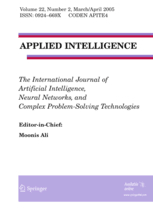
APPLIED INTELLIGENCE
Connecting research and practice in the world of AI.Applied Intelligence is a prominent peer-reviewed journal that has been instrumental in advancing the field of Artificial Intelligence since its inception in 1991. Published by Springer, a reputable name in academic publishing, the journal focuses on the innovative applications of intelligent systems, algorithms, and methodologies across various disciplines. With an impressive Q2 ranking in the Artificial Intelligence category for 2023, and a Scopus rank of #117 out of 350 in its field, Applied Intelligence is recognized for its significant contributions and rigorous standards. The journal is accessed primarily through subscription, ensuring that high-quality research reaches the academic community and industry professionals alike. Its commitment to disseminating cutting-edge research makes it an invaluable resource for researchers, practitioners, and students interested in the practical implications of AI advancements. Join a community dedicated to exploring the transformative power of artificial intelligence and stay ahead in this ever-evolving field!
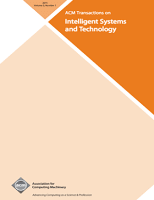
ACM Transactions on Intelligent Systems and Technology
Connecting Innovators in Intelligent Systems and TechnologyACM Transactions on Intelligent Systems and Technology, published by the Association for Computing Machinery (ACM), is a leading peer-reviewed journal dedicated to the rapid dissemination of innovative research in the fields of Artificial Intelligence and Theoretical Computer Science. With an impressive Impact Factor and a strong H-Index, it boasts a premier standing in the academic community, being ranked Q1 in both AI and Theoretical Computer Science categories as of 2023. This journal serves as a critical platform for researchers, professionals, and students aiming to contribute to and stay informed about the latest developments in intelligent systems and technology. While there are currently no open-access options, readers can explore invaluable insights into current trends and methodologies from 2010 to 2024, making it an essential resource for anyone passionate about advancing their knowledge in these rapidly evolving domains. The journal continues to foster collaboration and innovation, reflecting the forefront of research where technology intersects with intelligent systems.
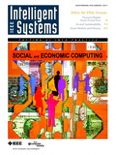
IEEE INTELLIGENT SYSTEMS
Empowering Innovation in AI and NetworksIEEE Intelligent Systems, published by the renowned IEEE Computer Society, stands at the forefront of research in the fields of Artificial Intelligence and Computer Networks and Communications. With an impressive Q1 ranking in both categories as of 2023 and Scopus rankings placing it in the top 5% of its field, this journal not only showcases cutting-edge scientific advancements but also serves as a vital resource for practitioners, academics, and students seeking to deepen their understanding and application of intelligent systems. The journal covers a broad range of topics including machine learning, data mining, and system architectures, reflecting its commitment to addressing contemporary challenges and innovations in technology. Although it does not offer open access, the journal's research contributions are invaluable, ensuring that its readership remains engaged with the latest findings and applications in a rapidly evolving field. For those interested in submitting high-quality research or staying updated on the latest developments, IEEE Intelligent Systems represents an essential hub of knowledge.
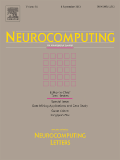
NEUROCOMPUTING
Pioneering Research in Neural and Computational FrontiersNEUROCOMPUTING is a premier academic journal published by ELSEVIER, specializing in the interdisciplinary fields of Artificial Intelligence, Cognitive Neuroscience, and Computer Science Applications. With an impressive impact factor and a Q1 ranking in its relevant categories for 2023, NEUROCOMPUTING is recognized as a leader in fostering innovative research and providing a platform for ground-breaking studies. The journal’s scope covers the convergence of neural computation and artificial intelligence, making it essential reading for researchers and professionals seeking to explore the latest advancements and applications in these dynamic fields. For those interested in the cutting-edge intersection of neuroscience and computational techniques, NEUROCOMPUTING offers a wealth of knowledge that significantly contributes to both theoretical and practical advancements. The journal is dedicated to publishing high-quality, peer-reviewed articles and is an invaluable resource for students and established scholars alike, looking to stay at the forefront of research trends.

AI
Transforming Research into Real-World AI ApplicationsAI, published by MDPI, is a distinguished open access journal dedicated to advancing the field of artificial intelligence. Since its inception in 2020, the journal has swiftly established itself as a prominent platform for scholarly research, currently ranking in the Q2 category for 2023 within the artificial intelligence sector according to Scopus. With an impressive global reach from its base in Basel, Switzerland, the journal aims to foster innovation and collaboration among researchers, professionals, and students alike, providing a forum to share groundbreaking findings and applications in AI. The journal's commitment to accessibility ensures that research is available to a wide audience, enhancing knowledge dissemination and contributing significantly to the ongoing evolution of artificial intelligence technologies. To explore the latest in AI research, readers can access articles through their open access model, encouraging an inclusive academic environment.
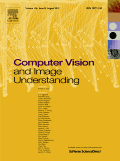
COMPUTER VISION AND IMAGE UNDERSTANDING
Pioneering Insights in Pattern RecognitionCOMPUTER VISION AND IMAGE UNDERSTANDING is a leading academic journal published by Academic Press Inc, Elsevier Science, dedicated to the advancement of the fields of computer vision, image understanding, and pattern recognition. Since its inception in 1993, this esteemed publication has garnered a reputation for excellence, achieving a remarkable Q1 ranking in the categories of Computer Vision and Pattern Recognition, Signal Processing, and Software as of 2023. With its robust impact factor and high visibility in the scientific community—ranking #22 out of 106 in Computer Vision and Pattern Recognition and #27 out of 131 in Signal Processing—this journal serves as a vital resource for researchers, professionals, and students looking to explore and contribute to state-of-the-art developments. Although it does not operate under an Open Access model, its rigorous peer-reviewed content ensures quality and relevance in a rapidly evolving technological landscape. The journal’s commitment to fostering innovation makes it an essential tool for anyone engaged in the study and application of computer vision technologies.

Intelligenza Artificiale
Advancing AI Knowledge Through InnovationIntelligenza Artificiale is a prominent academic journal dedicated to advancing the field of artificial intelligence, published by IOS PRESS, a renowned publisher in the scientific community. Based in the Netherlands, this journal's ISSN is 1724-8035 and its E-ISSN is 2211-0097. With a current impact factor that reflects its relevance in the scholarly landscape, it operates in the Q2 quartile of the Artificial Intelligence category as of 2023, which ranks it notably at #200 out of 350 within its field according to Scopus data. The journal provides a valuable platform for researchers, professionals, and students to disseminate and access cutting-edge findings from 2018 to 2024, focusing on the innovative applications and theoretical developments in artificial intelligence. With its commitment to fostering academic dialogue and collaboration, Intelligenza Artificiale is essential for anyone looking to stay at the forefront of AI research and practice.

IMAGING SCIENCE JOURNAL
Navigating the Evolving Landscape of Imaging TechnologiesImaging Science Journal, published by Taylor & Francis Ltd, serves as a vital resource for researchers and professionals in the fields of computer vision, pattern recognition, and media technology. With an ISSN of 1368-2199 and an E-ISSN of 1743-131X, this journal has been fostering scholarly dialogue since its inception in 1997, with a converged content offering extending through 2024. Its categorization in Quartile 4 in Computer Vision and Pattern Recognition and Quartile 3 in Media Technology highlights its relevance and contributions to emerging trends in these domains. Although it ranks 36th in the Engineering - Media Technology category and 96th in Computer Science - Computer Vision and Pattern Recognition, its innovative research and insights continue to attract the attention of scholars dedicated to advancing knowledge at the intersection of imaging technologies. Offering versatile access options, this journal is essential for students, researchers, and professionals aiming to stay informed and engaged in the rapidly evolving landscape of imaging science.

ADCAIJ-Advances in Distributed Computing and Artificial Intelligence Journal
Advancing the Frontiers of Distributed Computing and AIADCAIJ - Advances in Distributed Computing and Artificial Intelligence Journal, published by EDICIONES UNIV SALAMANCA, is an esteemed academic journal dedicated to the rapidly evolving fields of artificial intelligence, computer networks, and distributed computing. With its commitment to Open Access since 2012, the journal ensures that cutting-edge research is accessible to a global audience, fostering collaboration and innovation in the scientific community. Based in Spain, ADCAIJ is making significant strides with its current status in the Q3 quartile across various domains, including Artificial Intelligence and Information Systems. Despite its emerging status, it ranks with great potential, providing a platform for researchers to share their findings and contribute to advancements in these critical areas. The journal not only facilitates knowledge dissemination but also encourages interdisciplinary approaches that are crucial for tackling contemporary challenges. As it continues to expand its influence from 2019 through 2024, ADCAIJ is poised to play a key role in shaping future research trajectories and technological applications in its field.